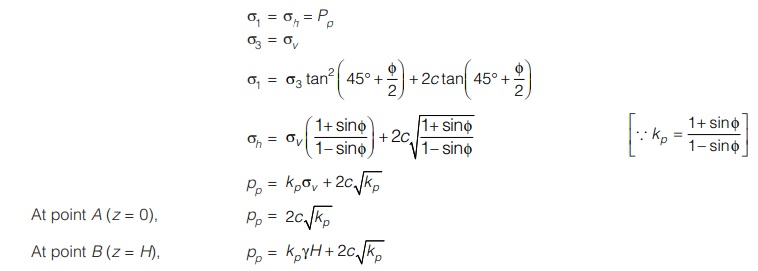Lateral Earth Pressure
TYPES OF LATERAL EARTH PRESSURE
Lateral earth pressure acting on the retaining structures is divided into three categories depending upon the movement of retaining structure with respect to back fill soil, which are as follows:
- Earth pressure at rest: Wall does not move at all.
- Active earth pressure: Wall moves away from the backfill soil.
- Passive earth pressure: Wall moves towards the backfill soil.

EARTH PRESSURE AT REST
When the wall is rigid and unyielding, the soil mass is in the state of rest and there are no deformations and displacements. The earth pressure corresponding to this state is called earth pressure at rest. Practical examples of earth pressure at rest are rigid wall earth system and basement slab retaining wall system.
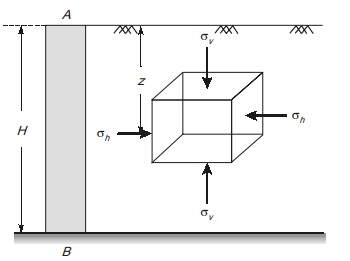
Assumptions:
- Soil mass is homogeneous, elastic, isotropic and semi-infinite.
- Poisson’s ratio (µ) is constant
- Theory of elasticity is valid.
Analysis:
- Consider a soil element at a depth
- For rest condition, lateral strain is zero.
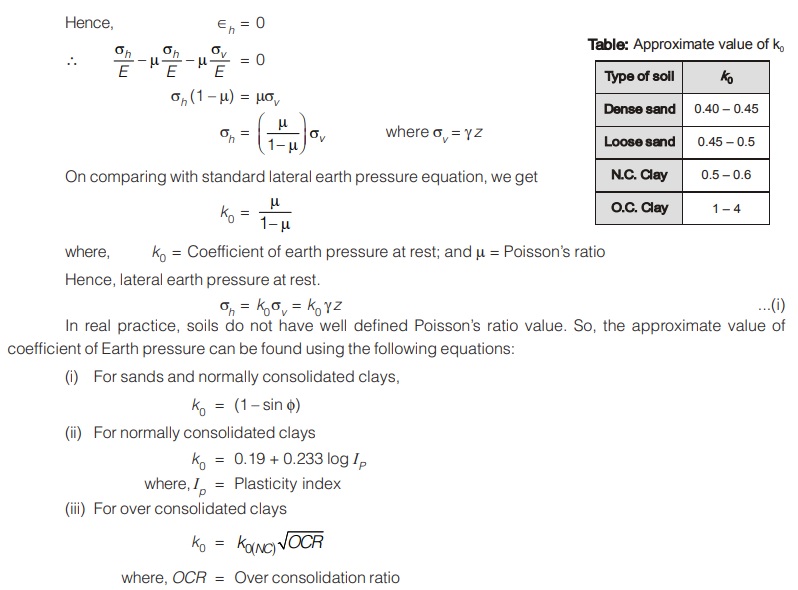
Lateral Thrust due to Dry or Moist Retaining Backfill
The lateral earth pressure variation is linear with respect to depth.
At pointA,
z = 0
∴ p = 0
At point B,
z = H
p = kγH
Considering unit length of wall,
Total earth pressure,
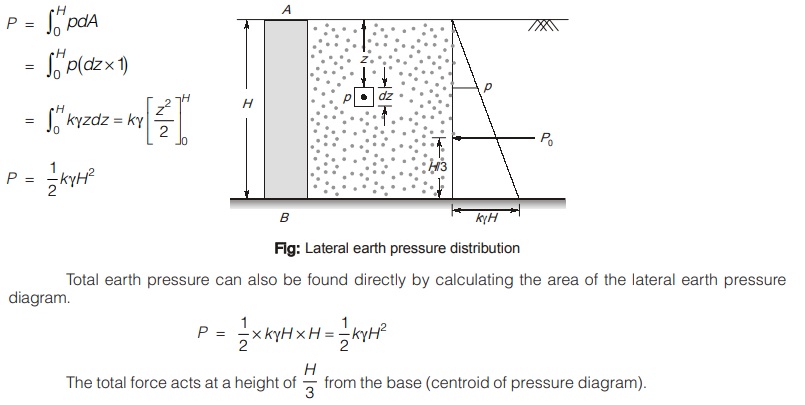
Active Earth Pressure
In active state where wall moves away from the backfill, the portion of the backfill that is just behind the wall also moves along with it, leaving the rest of soil mass.
This portion of the backfill which moves along with the wall is termed as failure wedge.
The movement of the wedge is being resisted by the shear strength of the soil which develops over the rupture surface in upward direction that causes the decrease of pressure acting on the wall. This decrease in pressure
with the movement of the wall takes place upto an extent when the entire shear strength of the soil is being mobilized and the pressure acting on the wall become minimum and is referred as active pressure.
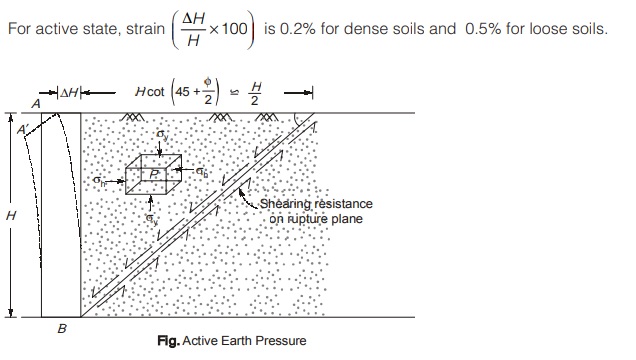
| S.No. | Active Earth Pressure | Passive Earth Pressure |
| 1. | Very little movement is required to mobilizes the active pressure (about 0.5% horizontal strain). | Much higher movement is required to mobilized the pressure (about 2% of horizontal strain). |
| 2. | Failure plane is inclined at (45°+ φ/2). | Failure plane is inclined at (45° – φ/2). |
| 3. | Width of sliding wedge at the top of wall is H cot (45° + φ/2). | Width of sliding wedge at top of wall is H cot (45° – φ/2). |
| 4. | Active pressure is less than pressure at rest. | Passive pressure is greater than pressure at rest. |
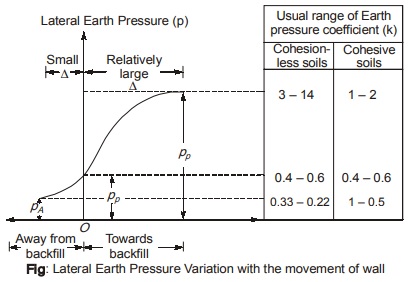
Active Earth pressure in cohesive soil
In active state, lateral stress σh reduces to its minimum value i.e., pa while the vertical stress σv remains unchanged.
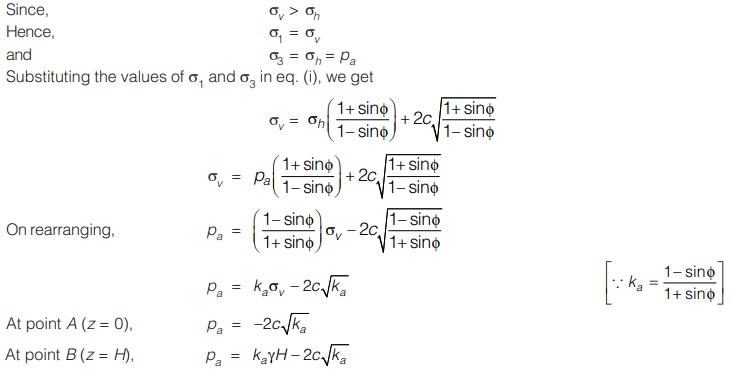
Negative pressure in cohesive soils in active state at top indicates that these soils are in the state of tension and these tensile stresses gradually reduces to zero at some depth z0 below the ground surface.
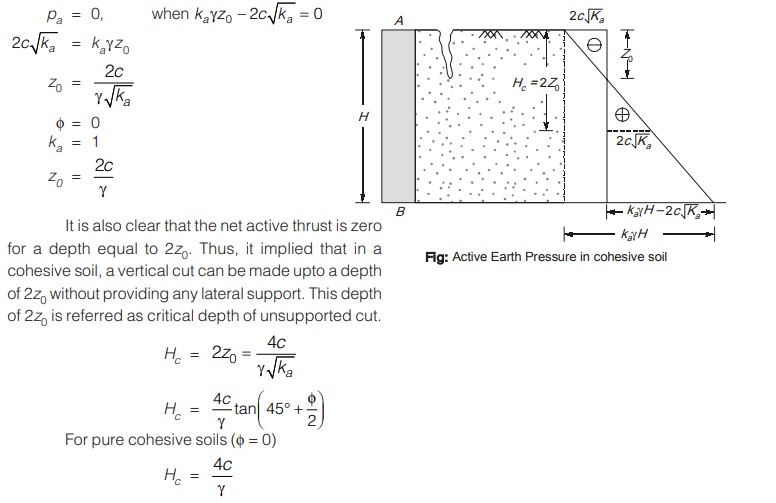
Passive Earth Pressure in cohesive soil
